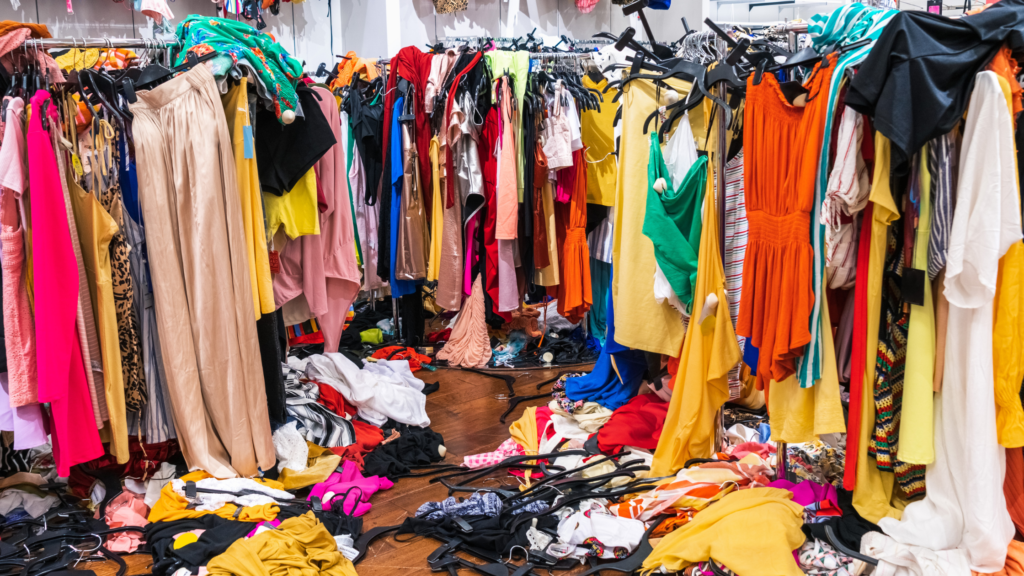A Look at Sustainable Fashion & How It’s Growing

Sustainable fashion is a growing trend that minimizes environmental impact while providing durable clothing and accessories. Beyond this description, sustainable fashion demands a total standard shift with people’s perception of fashion and consumption.
The sustainable movement is a response to fast fashion; nonprofits, consumers, and retailers are now shifting to slow fashion, a.k.a sustainable fashion, which advocates for an ethical apparels production system that respects people, the environment, and animals. Governments and relevant authorities are also in on this movement, and are emphasizing sustainable development in fashion with greater regulations and restrictions.
It’s hard or incomplete to discuss sustainable fashion without first understanding its direct rival (or should we say what birthed the need for it) – fast fashion.
Understanding fast fashion

Fast fashion is a term used to describe cheap trending clothing that are very quickly coming in and out of style. Many fast fashion retailers introduce new products multiple times a week in order to stay on trend. Just go into your closet and check the labels on your clothing. Chances are most of them come from fast fashion brands. So how did fast fashion manage to take over your closet and become so successful?
It’s said that fast fashion is a response to a huge market of consumers that are demanding high fashion at a low cost. But the truth is that fast fashion retailers are actually creating that demand, because selling a huge amount of clothes is profitable. But, how exactly do they maximize their profit?
Well, as you may already know, the fashion world is a dynamic one where new trends and styles come and go. Now, fast fashion producers directly and deliberately influence how fast these changes occur, so that shoppers always feel outdated and unfashionable, and come back for new trendier clothes. Also, clothes from this market are strategically made with less superior materials, which means that you will have to get a replacement sooner. And because these clothing are usually cheap, it’s easier to buy them in more quantity and much more frequently. See how toxic this market can be? Well, it goes even worse than already mentioned.
Fast fashion operates without consideration for the environment as waste or human labor.
Speaking of environmental impact, the fashion industry produces approximately 8-10% of annual, global carbon emissions. A significant amount of the high carbon footprint is related with the source of energy for production. This industry is also the second largest industry consumer of water, with an estimated 79 trillion litres of water every year. It also contributes to global industrial water pollution from textile dyeing and treatment, by 20%.
In the aspect of societal consequences, labour workers in the fashion industry generally are heavily underpaid and are forced to work in harsh and/or unhealthy working conditions, for long hours. There’s also the issue of child labour and gender-based risks for females in developing economy countries.
The above has been the practice for many years; however, trends are shifting now and shoppers are starting to demand more ethical goods, a.k.a sustainable products. This is how sustainable fashion became a movement.
Demand for sustainable fashion
The world needs a more sustainable fashion industry. It is our only hope for a future with a healthy planet, adequate resources, and equal human rights, as long as fashion is concerned. Consumers have made it clear that sustainable fashion is a prime concern for them and manufacturers are beginning to align their practices with this demand. After all, consumers have the power to be sustainable fashion consumers and integrate eco-friendly and ethical fashion into their daily lives.
Taking things further – SDG goals

Big global organizations are developing guidelines and partnerships for sustainable fashion practices. The United Nations, with the help of associated organizations, has launched the UN Alliance for Sustainable Fashion. This Alliance promotes projects and policies that ensure that the fashion industry contributes to the progress of the organizations’ SDG (Sustainable Development Goals) targets. The coalition works in all areas of the fashion industry including production of raw materials, production, distribution, consumption, and disposal. The objective is to change the direction and image of the fashion industry from one that is contributing to environmental and societal damage, to one that is a representation of successful, intersectional execution of the sustainable development goals.
Find out more about sustainability, fashion and e-commerce from our previous blogs.
